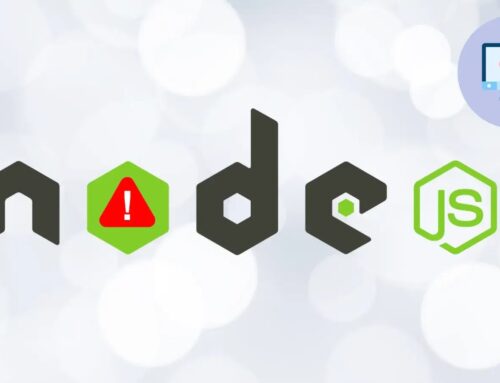
New VoidProxy PhaaS Service Attacking Microsoft 365 and Google Accounts
The digital landscape is under continuous assault, and a new, highly sophisticated adversary has emerged. Security teams have identified a significant uptick in phishing campaigns powered by VoidProxy, a novel Phishing-as-a-Service (PhaaS) platform. This operation, first observed in August 2025, is meticulously designed to bypass traditional defenses, targeting critical Microsoft 365 and Google accounts with alarming stealth. Understanding VoidProxy’s tactics is paramount for organizations looking to safeguard their digital assets and user credentials.
What is VoidProxy PhaaS?
VoidProxy represents a new generation of Phishing-as-a-Service, offering cybercriminals an advanced toolkit to deploy highly effective phishing campaigns. Unlike simpler phishing kits, VoidProxy integrates sophisticated anti-analysis techniques and leverages Adversary-in-the-Middle (AitM) capabilities. This allows the service to intercept and relay legitimate login credentials in real-time, often bypassing multi-factor authentication (MFA) challenges by presenting them directly to the victim from the legitimate service.
The service’s initial deployment has shown a clear focus on compromising Microsoft 365 and Google accounts, likely due to their widespread adoption in enterprise environments and the rich trove of data and access they provide upon compromise.
Advanced Techniques Employed by VoidProxy
VoidProxy distinguishes itself through several key technical advancements:
- Adversary-in-the-Middle (AitM) Capabilities: This core functionality allows the phishing page to act as a proxy between the victim and the legitimate service. When a user enters their credentials or responds to an MFA prompt, VoidProxy forwards this information to the actual service and then relays the legitimate response back to the user, making the process appear seamless and legitimate.
- Anti-Analysis Features: VoidProxy incorporates mechanisms designed to detect and evade security researchers, automated analysis tools, and sandboxed environments. This can include checks for browser user-agents, IP addresses associated with security firms, and even behavioral analysis to determine if the interaction is human or automated.
- Compromised Legitimate Email Lures: Initial campaigns leveraging VoidProxy have shown a preference for originating emails from already compromised legitimate accounts. This significantly enhances the credibility of the phishing emails, making them more likely to bypass email security gateways and trick unsuspecting users.
- Dynamic Content Generation: To avoid detection based on static signatures, VoidProxy likely employs dynamic content generation for its phishing pages, varying elements such as HTML structure, image sources, and text content across different attack instances.
Targeting Microsoft 365 and Google Accounts
The concentration on Microsoft 365 and Google accounts is a strategic choice for VoidProxy operators. Compromising these accounts grants attackers:
- Access to sensitive emails and documents.
- Ability to launch further internal phishing attacks (supply chain attacks).
- Entry points into corporate networks and cloud environments.
- Loss of intellectual property, financial data, and personal identifiable information (PII).
The success of AitM attacks against these platforms underscores the need for robust security layers beyond traditional password protection.
Remediation Actions and Proactive Defense
Defending against advanced PhaaS like VoidProxy requires a multi-layered approach that combines technical controls with continuous user education:
- Implement FIDO2/Hardware-Based MFA: While VoidProxy’s AitM can bypass some forms of MFA, FIDO2 security keys (like YubiKey or Titan Security Key) offer strong phishing resistance. These devices cryptographically bind authentication to the legitimate domain, making AitM attacks ineffective. Organizations should prioritize their deployment.
- Enhanced Email Filtering and Threat Intelligence: Regularly update and configure email security gateways (ESGs) to detect sophisticated phishing indicators, including domain impersonation, suspicious sender behavior, and altered URLs. Leverage threat intelligence feeds to block known VoidProxy infrastructure.
- Routine Security Awareness Training: Educate users on the evolving tactics of phishing attacks, emphasizing the dangers of clicking suspicious links, even if they appear to originate from trusted sources. Teach them how to identify legitimate login pages and the importance of reporting suspicious emails.
- Conditional Access Policies: Implement conditional access policies in Microsoft 365 and Google Workspace to require MFA, restrict access from unmanaged devices or unusual locations, and enforce device compliance.
- Continuous Monitoring and Incident Response: Deploy Endpoint Detection and Response (EDR) and Security Information and Event Management (SIEM) solutions to monitor for unusual login activities, data exfiltration attempts, and suspicious network traffic. Have a well-defined incident response plan ready to contain and remediate successful breaches swiftly.
- Implement DMARC, DKIM, and SPF: Ensure these email authentication protocols are correctly configured for your domains to prevent email spoofing and detect attempts to send emails as your organization.
Key Takeaways
The emergence of VoidProxy signifies a dangerous evolution in the PhaaS landscape, bringing highly effective AitM capabilities and anti-analysis mechanisms to a wider range of threat actors. The primary targets, Microsoft 365 and Google accounts, highlight the high-value nature of cloud-based credentials.
Organizations must move beyond basic security practices and embrace advanced phishing-resistant MFA, robust email security, and comprehensive user education. Proactive defense and a strong incident response posture are no longer optional but essential in combating sophisticated threats like VoidProxy.





